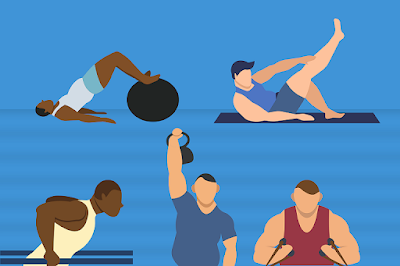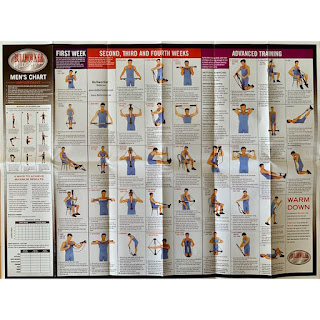Isometrics or isometric exercises are a type of exercise that involves holding a muscle in a fixed position for a prolonged period of time. This prolonged contraction of muscle strengthens the muscles and bones. Isometric training can be performed at home and in the gym. It’s also beneficial for athletes and individuals who want to increase their strength, endurance, and muscle mass.
Bullworkers
Benefits Of Doing Isometrics Training
Where To Buy Bullworker Charts
If you don't want to read about charts for different models and the types of charts available online, a full selection of Bullworker charts can be bought from the link below.
Bullworker Charts For Sale Full List Here
You could always print it off if you have access to a high quality printer. But to get the infographic / poster to be the same quality and size of an original Bullworker chart / poster a professional printer would be needed, and I doubt most people own one of those. So it's best to leave it to the professionals.
Bottom line is - Most people want the actual workout Chart in their possession, in physical form, so they can pin it up on their wall or door. The best way to get a real chart [they are available for different models, including the X5] is to just buy it online from the official Bullworker website. They are fairly cheap, very good quality and they not only ship within the US but also to various other countries, including the UK.
The full list of charts available are as follows:
- Bow Classic
- X5
- Steel Bow
- Sit At Home Fitness
- Bow Extension + Iso-Bow
As well as charts, there's also a whole range of training guides and manuals. Some of those include: Spiral Bound Classic and ISO Bow manuals, Bullworker Bible, Steel Bow manual, ISO90 course, Bullworker 90 course, Power Pump Method and the Muscle Up Program.
Long Time User Gives His Thoughts
#review reddit #x5 #classicreviews #proreviews #basicreview #iso-floreview #isobowreview #bowbasic review #bowreview #isanygood #doesitreallywork #classicreview #bowclassicreview
Bullworker: Stomach Training (ABS)
Don't yet own a Bullworker and want to find out more? You can find the Bullwoker 36-Inch Classic (newer model) review on this blog here.
Beginner Exercises With The Bullworker
Depending on what spring is installed, if using a newer Bullworker, this could be very difficult. Or, regardless of what spring you have installed, or if you are using an older model if you hold down for 20 seconds instead of 10 at a level you are comfortable at. Everyone is different. If you're a total beginner it would be wise to take it easy to begin with and work your way up.
Quick Comparison: Weights Vs Bullworker
Pumping iron can be somewhat addictive, and I 'd be lying if I said I didn't sometimes feel an urge to lift weights, even though I'm not really a weights guy. My conclusion: Have both! Why not. They are both easy to get hold of, and both are very reliable. Bullworkers come with a long warranty when bought brand new, and solid weights (iron) will potentially last a life time. Model used in the video: The Steel-Bow.
Bullworker Steel-Bow Video Review
Adaptation: The video also includes an interesting comparison with the X5 model, where the reviewer uses the smaller Steel-Bow to make some of the usual exercises he does with the X5 more comfortable. Overall, a good balanced review.

